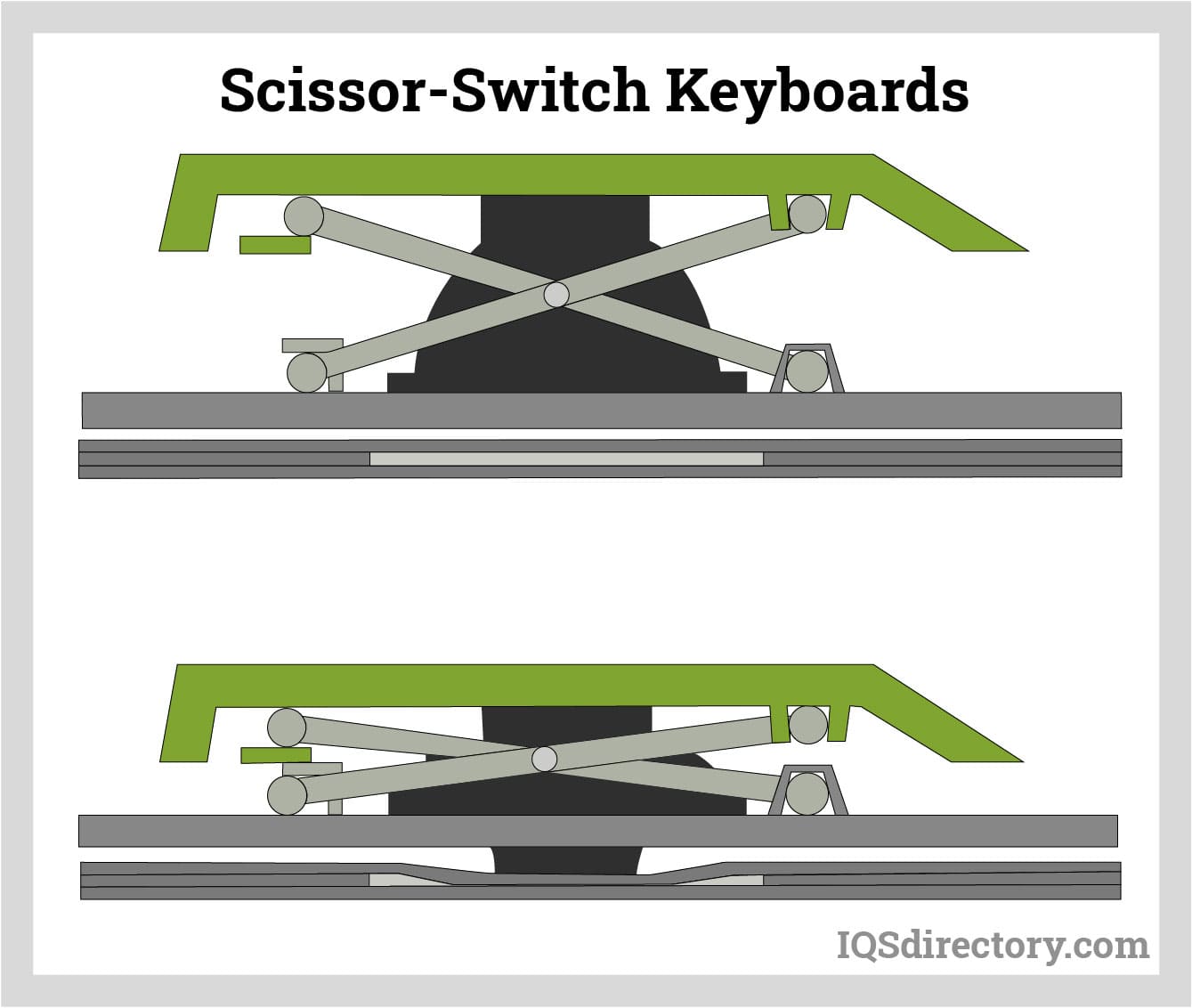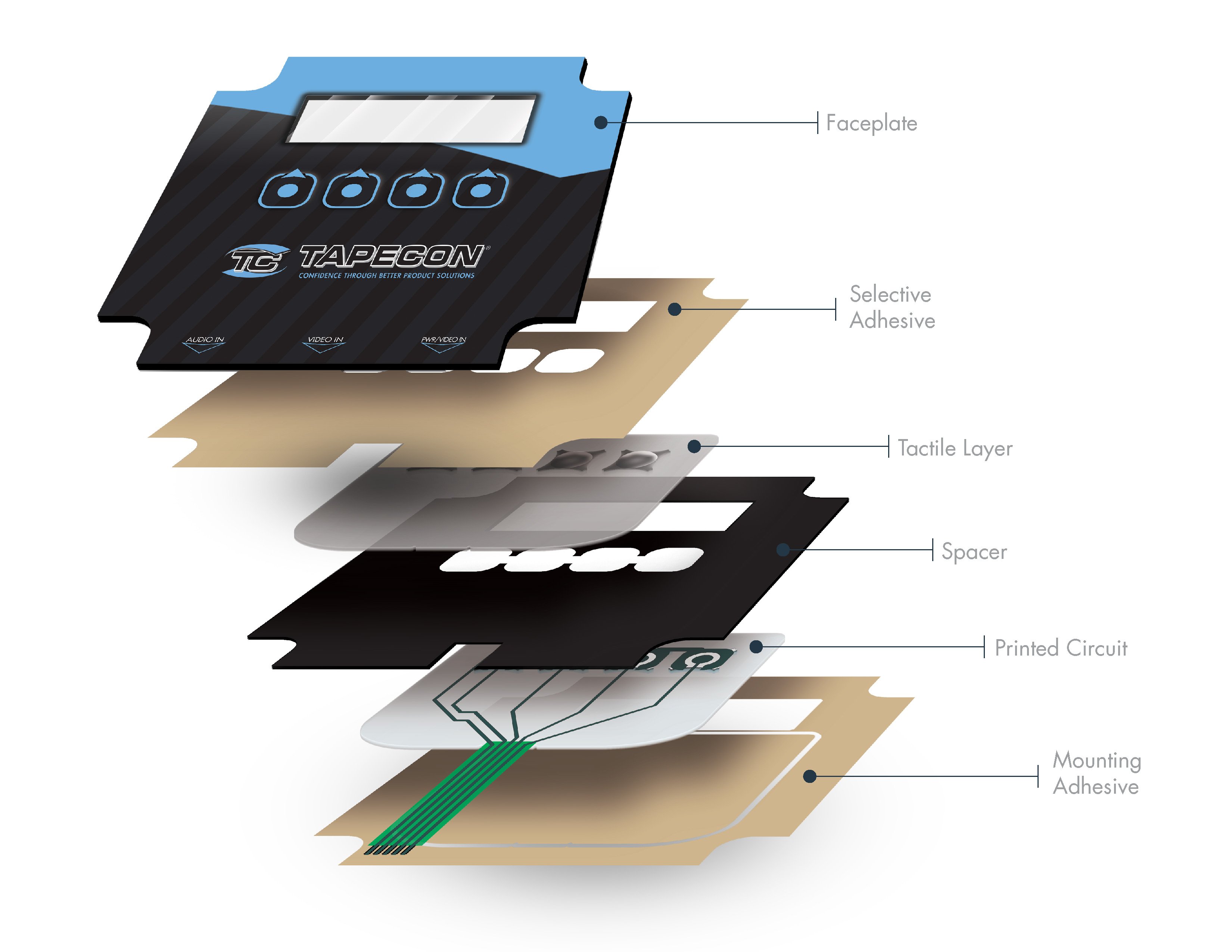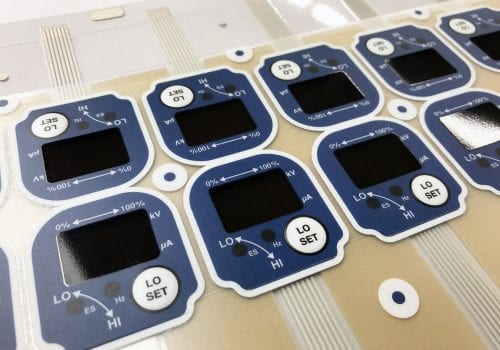The Production Process Behind Membrane Layer Change: What You Need to Know
The production process behind membrane changes combines careful layout, material choice, and quality control. It begins with recognizing the details of membrane layer button style and proceeds with numerous phases, including product options and printing strategies. Each phase plays an important role in making certain performance and sturdiness. The complexities of layer building and construction and the rigorous screening criteria may reveal understandings that are not instantly noticeable. What exists past these fundamental components?
Recognizing Membrane Layer Switch Over Style
Membrane layer switches might show up simple at initial look, their layout entails intricate considerations that ensure performance and durability. The design procedure begins with a detailed understanding of customer demands, including the user interface's designated application and ecological factors. Ergonomics is a crucial element, as the format needs to facilitate convenience of usage while guaranteeing that responsive responses satisfies individual expectations.Moreover, the layering of parts, such as visuals overlays, sticky layers, and conductive traces, must be precisely engineered. membrane switch. This split configuration not just influences the button's responsiveness but likewise affects its longevity. Focus is offered to the sealing methods employed to shield against dampness and dirt, which can endanger efficiency. In addition, style considerations reach appearances, where color design and aesthetic quality enhance individual experience. Ultimately, the style of membrane layer changes balances performance, user experience, and sturdiness, ensuring that they meet the needs of numerous applications efficiently
Products Utilized in Membrane Layer Switch Over Production
When selecting products for membrane layer button manufacturing, it is vital to ponder both efficiency and sturdiness. The primary materials include polyester and polycarbonate movies, which give flexibility and stamina. These movies are frequently covered with adhesive to assure proper bonding to substrates. Conductive inks, normally composed of silver or carbon, are critical for developing electric connections within the button, permitting reliable operation.Additionally, a safety layer, such as a difficult layer, is frequently put on enhance scrape resistance and longevity. The selection of backing product, such as acrylic or foam, can significantly impact the button's responsive feel and total customer experience. Additionally, various ecological aspects, including temperature level and humidity, ought to assist material choice to ensure peak performance in certain applications. Inevitably, the right combination of products adds to the membrane layer switch's functionality and life-span, making educated selections necessary for producers.
The Printing Process: Creating Graphics and Text
The printing process in membrane switch manufacturing plays a considerable duty in producing top notch graphics and text. Different graphic design techniques are used to guarantee visual allure and capability, while mindful ink option methods are crucial for longevity and efficiency. Recognizing these aspects is basic for attaining finest results in membrane button layout.
Graphic Design Techniques
Graphic layout methods play a vital function in the printing procedure of membrane layer switches, as they specify how graphics and message will inevitably appear on the last product. Reliable visuals design entails the calculated use of designs, shades, and font styles to boost readability and visual charm. Developers often make use of vector graphics for scalability, ensuring that images continue to be sharp at numerous sizes. Additionally, attention to contrast and placement is crucial, as it affects customer interaction and aesthetic top quality. The consolidation of branding components, such as logos, have to be managed with care to preserve brand name integrity. Overall, thoughtful graphic style methods add significantly to the performance and appearance of membrane layer switches, influencing customer experience and product performance.
Ink Selection Approaches
Choosing the appropriate ink is vital for achieving the preferred visual quality and longevity in membrane layer switch manufacturing. Different ink types are utilized, including solvent-based, water-based, and UV-curable inks. Each kind uses unique features, such as resistance, adhesion, and flexibility to environmental variables. Solvent-based inks are frequently favored for their sturdiness and vivid shades, while water-based inks are more eco-friendly but might have restrictions in bond. UV-curable inks provide quick curing and durable efficiency. In addition, shade matching strategies assure that the picked inks line up with style specs. Inevitably, the option of ink must take into consideration aspects such as application method, substratum compatibility, and end-use needs to achieve exceptional lead to membrane layer switch graphics and message.
Layer Building And Construction and Assembly

Product Choice Process
A cautious option of products is vital in the manufacturing process of membrane layer switches, as it straight affects performance and longevity. The primary products utilized consist of polyester, polycarbonate, and various conductive inks. Polyester is commonly favored for its excellent resistance to chemicals and abrasion, making it ideal for harsh atmospheres. Polycarbonate, on the other hand, provides remarkable clearness and influence resistance, which is beneficial for applications calling for exposure index and toughness. Conductive inks, generally made up of silver or carbon, are vital for producing trustworthy electrical paths. In addition, the option of glue materials influences the overall honesty of the button - membrane switch. Evaluating elements such as environmental exposure, tactile feedback, and visual needs overviews manufacturers in selecting the best materials for their certain applications
Layer Attachment Strategies
Adhering layers in membrane layer button building is an important process that ensures performance and longevity. Different attachment strategies are used to safeguard optimal bonding in between layers, which usually consist of using adhesives, warm, and pressure. Pressure-sensitive adhesives (PSAs) are typically used for their convenience of application and immediate bonding capacities. Furthermore, thermal bonding techniques can be used, where warm is utilized to activate sticky residential properties, safeguarding a strong bond. The selection of attachment approach largely relies on the products involved and the specific application needs of the membrane switch. Correct alignment and consistent application of adhesives are vital to prevent flaws, safeguarding the switch runs effectively throughout its desired lifespan.
Quality Assurance Actions
Ensuring top quality control throughout the layer building and construction and assembly of membrane buttons is vital for maintaining efficiency and dependability. This process generally involves several critical procedures, consisting of detailed inspections at each stage of manufacturing. Manufacturers use innovative testing techniques, such as peel tests and adhesion evaluations, to validate the honesty of layer bonds. Furthermore, aesthetic assessments are performed to determine any defects in printing or product variances. Environmental problems, such as temperature level and humidity, are carefully monitored to guarantee excellent treating and bond. Normal calibration of tools assists maintain specific production criteria. By applying these quality assurance steps, suppliers can considerably decrease the risk of product failing, guaranteeing that the last membrane switches satisfy the called for specs and consumer expectations.
Evaluating and High Quality Control Steps

Technologies in Membrane Change Innovation
As innovations in technology continue to advance, membrane switches are gaining from innovative advancements that enhance their functionality and customer experience. One remarkable development is the integration of capacitive touch modern technology, which permits more instinctive and responsive interface. This change not only enhances appearances yet also reduces mechanical deterioration, expanding the lifespan of the switches.Additionally, innovations in visuals overlay materials have actually caused enhanced sturdiness and resistance to ecological aspects such as dampness and UV light. These materials now use enhanced clearness and brightness, further raising the aesthetic appeal.Furthermore, the consolidation of smart technology is transforming membrane layer switches into interactive control board, enabling connection with IoT tools. This connection cultivates a seamless user experience, leading the way for applications in different sectors, from healthcare to customer electronics. Collectively, these developments position membrane switches as important parts in contemporary gadget design.
Regularly Asked Concerns
How much time Does the Membrane Layer Switch Manufacturing Process Take?
The duration of the membrane button production process can vary substantially. Variables such as intricacy, materials used, and production quantity impact timelines, with common production ranging from a few days to numerous weeks for conclusion.
What Are the Common Applications for Membrane Layer Switches?
Membrane switches are commonly used in numerous markets, including vehicle controls, household devices, clinical gadgets, and consumer electronic devices (membrane switch). Their versatility and resilience make them ideal for applications needing user-friendly interfaces and reliable efficiency in varied settings
Can Membrane Layer Switches Be Customized for Specific Requirements?

What Is the Life expectancy of a Normal Membrane Switch Over?
The lifespan of a common membrane switch varies, however typically, it varies from 1 to 5 million cycles. Variables such as usage, atmosphere, and material top quality considerably affect longevity and overall efficiency gradually.

Are Membrane Switches Over Eco-friendly?
The environmental kindness of membrane switches varies. Some products used might not be recyclable, while others can be eco-friendly. The total effect relies on producing practices and materials, necessitating mindful factor to consider throughout choice and disposal. The manufacturing procedure behind membrane switches combines cautious layout, material choice, and top quality control. It begins with recognizing the details of membrane layer switch layout and progresses with various phases, including material choices and printing methods. When choosing materials for membrane button production, it is crucial to ponder both performance and sturdiness. A cautious selection of products is crucial in the production process of membrane layer switches, as it directly affects capability and sturdiness. The option of attachment technique mainly depends on the materials involved and the particular application demands of the membrane layer switch.